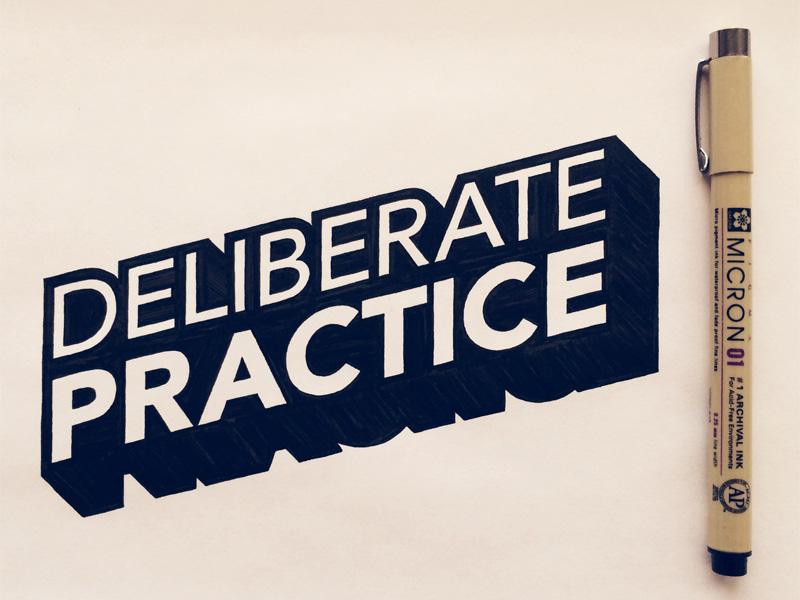SECTION 1 - Why Career Narratives Matter More Than Resumes (and Why Interviewers Rely on Them)
Most candidates underestimate the role of narrative in technical hiring. They assume interviews are purely rational, that interviewers objectively evaluate skills, knowledge, and performance. In reality, interviews are deeply human experiences. Interviewers use storytelling, coherence, emotional signals, and pattern-recognition to gauge not just what you can do but who you are as an engineer.
A resume lists what you did.
A narrative explains why it matters.
Interviewers use your narrative to answer questions they can’t ask outright:
“Does this person know who they are?”
“Do they have a direction?”
“Are they growing toward something or running away from something?”
“Will they be motivated here?”
“Is their journey coherent or chaotic?”
“Do they think with intentionality or react impulsively?”
Let’s break down why narratives matter so much, and why interviewers are trained (formally or informally) to pay attention to them.
a. Narratives Reveal Whether Your Career Has an Internal Logic
Every strong ML, SWE, or data career has an underlying logic, a set of forces that influenced decisions:
- curiosity
- impact
- challenge
- craft
- systems thinking
- product focus
- autonomy
- technical depth
- leadership development
Weak candidates list jobs:
“I worked here, then here, then here.”
Strong candidates explain why those steps made sense:
“I moved into ML infra because I realized I loved scalable systems more than modeling.”
“I shifted to product ML because I found myself drawn to real user outcomes.”
The narrative is the connective tissue.
It’s what turns randomness into direction.
Interviewers favor candidates with stories that demonstrate intentionality and learning, candidates who seem to be moving toward something, not drifting into things.
b. Narratives Provide a Cognitive Shortcut for Interviewers
Interviewers are human. After a long day of back-to-back loops, they remember:
- a story
- a theme
- an insight
- a turning point
- a personal motivation
- a defining challenge
- a moment of growth
They do not remember timelines or bullet points.
Humans evolved to store stories because narratives encode both information and meaning. That’s why a memorable story is worth more than a flawless resume walkthrough.
This is why candidates often underestimate the power of narrative. They assume that because tech is analytical, everything must be evaluated analytically. But interviewers overwhelmingly rely on story-based recall when writing feedback.
“He’s the engineer who rebuilt a broken ML pipeline from scratch.”
“She’s the one who switched from research to production after a major outage.”
“He’s the person who taught himself modeling because his team lacked ML expertise.”
Stories create identity.
Identity creates memory.
Memory influences hiring decisions.
c. Narratives Communicate Self-Awareness, a Top Hiring Signal
One of the strongest indicators of seniority is self-awareness. Interviewers constantly test whether candidates understand:
- how they think
- why they make decisions
- their growth curves
- their blind spots
- their core motivations
- their values
- their trajectory
A clear narrative shows you’ve reflected deeply on your journey.
A muddled narrative signals you haven’t.
Self-aware candidates sound like leaders.
Unaware candidates sound like followers.
This difference is so important that it’s often evaluated implicitly in cultural, leadership, and cross-functional rounds. It’s also a key factor discussed in interviews that focus on impact and clarity, such as:
➡️Beyond the Model: How to Talk About Business Impact in ML Interviews
Narrative = awareness.
Awareness = maturity.
Maturity = trust.
d. Narratives Reduce Perceived Risk for Hiring Managers
A hiring manager’s biggest fear is uncertainty.
- Will you be motivated by the role?
- Will you stay long enough to produce impact?
- Will your trajectory align with the team’s needs?
- Will you take initiative or require heavy guidance?
A strong narrative answers these questions implicitly by showing:
- your direction
- your internal drive
- your growth motivations
- your decision patterns
- your long-term alignment
When a hiring manager feels your narrative is coherent, you become a safe hire.
When your narrative is unclear or fragmented, you feel risky, even if technically strong.
e. Narratives Highlight Growth, Not Just Stability
Resumes often hide growth.
Narratives highlight it.
Interviewers want candidates who evolve, not stagnate.
A strong narrative demonstrates:
- increasing ownership
- deeper technical mastery
- growing autonomy
- expanding scope
- refined decision-making
- better self-evaluation
- increasing system-level thinking
This is the trajectory of someone who becomes:
- senior
- staff
- tech lead
- architect
Interviewers select for potential, narrative reveals potential better than any fact.
SECTION 2 - The Psychology Behind Memorable Narratives: Why Some Candidates Stick in a Hiring Manager’s Mind
Before you learn how to craft your career narrative, you need to understand why narratives work at all. Many candidates think interviews are merit-driven, rational evaluations. They imagine interviewers scoring checklists, weighing pros and cons, and making decisions analytically.
In reality, interviewers are human.
And humans remember stories, not bullet points.
Hiring decisions aren’t made in spreadsheets.
They’re made in rooms, by people, who must advocate for you when you’re not around.
Think about that moment.
The panel has interviewed 8–12 candidates. They're tired. They're overloaded. They’re trying to distinguish who stood out and who didn’t. And the decision hinges on one question:
“Who can I clearly remember?”
Not who said the most technical things.
Not who had the most projects.
Not who recited all the definitions correctly.
But who had a narrative that was coherent, distinct, and sticky.
This is where most candidates fail, their story is so fragmented, disconnected, and overstuffed with technical detail that the interviewer cannot retell it later. And if an interviewer cannot retell your story, you lose the offer by default.
To build a narrative that interviewers remember, you need to understand three psychological pillars:
- Cognitive coherence
- Emotional salience
- Identity signaling
These are not marketing tricks, they are cognitive mechanics built into how human memory works.
Let’s break them down.
a. Cognitive Coherence - The Brain Remembers What Fits Together
The human brain likes patterns. It likes continuity. It likes cause-and-effect. It likes stories that start somewhere, go somewhere, and resolve somewhere. When the information doesn’t fit together, the working memory rejects it.
This is why interviewers forget candidates whose career stories sound like this:
“I did a data science internship… then some backend work… then a research project… then I switched to ML ops… then I tried product analytics… now I’m applying for ML engineering roles.”
Technically accurate.
Emotionally empty.
Cognitively chaotic.
Coherence comes from narrative logic, not chronology.
A coherent narrative sounds like:
“I started with X curiosity → which led me to Y challenge → which taught me Z insight → which shaped my role choices → which now motivates me to pursue this direction.”
It doesn’t matter if you made twists and turns, your job is to give those twists meaning.
Interviewers don’t remember facts; they remember patterns.
And coherence creates the pattern.
b. Emotional Salience - The Brain Remembers What It Feels, Not Just What It Hears
People assume interviewers only care about skills. But neuroscience shows we remember emotionally charged moments far more vividly than neutral ones. The brain latches onto:
• struggle
• turning points
• breakthroughs
• failures
• risks taken
• what you cared about
• why you cared
• how something changed you
This doesn’t mean melodrama.
It means humanity.
For example:
“When our model failed in production, I realized I wasn’t just debugging, I was responsible for the customer experience. That shifted how I thought about ML forever.”
That line stays with an interviewer.
Compare it to:
“I worked on model optimization and monitoring.”
One is alive.
One is dead.
Interviewers remember the alive one.
Your narrative should include at least one emotional anchor, not sentimental, but meaningful. A point where something clicked, changed, or challenged you.
Emotion makes your story feel true, and truth is remembered.
c. Identity Signaling - Interviewers Remember Who You Are, Not Just What You Did
Every great career narrative answers the unspoken interview question:
“Who are you as an engineer?”
Not your title.
Not your tasks.
Not your responsibilities.
Your identity.
Interviewers place candidates into cognitive categories like:
• “the researcher-engineer hybrid”
• “the product-minded ML engineer”
• “the reliability-obsessed systems builder”
• “the customer-first problem solver”
• “the creative generalist with strong ML intuition”
These identities make you distinct. They help the panel recall you even when details fade.
Identity is conveyed through patterns in your narrative:
- the problems you gravitate toward
- the way you describe your work
- the values that shaped your choices
- the through-line connecting your roles
If you don’t intentionally signal identity, interviewers create one subconsciously, and you may not like the version they construct.
Strong candidates build identity deliberately.
Weak candidates leave it to chance.
d. The Interviewer’s Retell Test
Here’s the ultimate psychological litmus test:
If your interviewer had to retell your story to the hiring manager in 30 seconds, what would they say?
Would it be:
“Um… she did a bit of everything… worked on some ML stuff… used Python… seems smart…”
Or:
“He went from economics to ML because he became obsessed with causal modeling. Every project he touched involved moving from correlation to causation. It’s a clear progression.”
The second candidate wins, even if both have equal skill.
This retell test is the backbone of your narrative.
Because hiring decisions happen when you’re not in the room.
Your job is to plant a story the interviewer can easily, confidently, and accurately retell.
e. Memory Is Narrative-Driven - Not Detail-Driven
Interviewers forget:
- terminology
- tools
- model types
- specific metrics
- dataset sizes
But they remember:
- the moment you came alive
- your turning point
- your identity
- your through-line
- your motivation
- the problem that shaped you
Details fade.
Narratives stick.
Memory is not a warehouse of facts, it's a web of stories.
Your career narrative must weave itself into that web.
SECTION 3 - The Cognitive Architecture of a Memorable Career Narrative
Most candidates think a career narrative is a chronological story, a list of roles, companies, dates, milestones, responsibilities. But interviewers don’t remember timelines. They don’t remember job titles. They don’t remember every project. They don’t remember the exact metrics. And they definitely don’t remember the order of the résumé.
Interviewers remember structure.
Interviewers remember meaning.
Interviewers remember emotion.
Interviewers remember contrast.
Interviewers remember turning points.
Interviewers remember clarity.
A memorable career narrative is not an autobiography.
It is a cognitive artifact, a story engineered to be compressed, stored, and recalled easily inside the interviewer’s mind.
If you’ve ever wondered why some candidates leave the room and the interviewer immediately says, “That’s the person,” it’s not because they had the best resume. It’s because their narrative was cognitively sticky.
This section breaks down how these narratives are structured internally so they remain memorable long after the interview is over.
a. Memorable Narratives Follow a Psychological Sequence
Humans don’t remember data, they remember arcs.
Arcs rely on three elements:
- Where you started
- What changed you
- Why you’re here now
This “transformation structure” is the foundation of every career story that interviewers find compelling.
For example:
- You started as an engineer curious about ML
- You faced the challenge of scaling real systems
- You transformed into someone who thinks deeply about model-product interaction
- And now you’re targeting roles that align with that evolved skill set
Interviewers remember transformation because transformation implies growth.
Growth implies potential.
Potential implies value.
b. Your Narrative Needs a Cohesive Spine - Not a List of Projects
Weak candidates tell their story like a résumé:
- “I worked on X.”
- “Then I worked on Y.”
- “Then I moved to Z.”
There’s no spine, no thread, no glue.
Strong candidates build narratives around a single throughline, the idea that connects all their choices, all their roles, and all their shifts.
A throughline might be:
- “I became obsessed with how data becomes decisions.”
- “I kept finding myself drawn to problems where ML meets product impact.”
- “My career has been about going deeper into scalable ML systems.”
- “I’ve always focused on the places where user behavior and ML converge.”
The throughline is what allows interviewers to summarize you mentally.
It’s the compression algorithm for your career story.
Without it, you’re noise.
With it, you’re narrative.
c. Interviewers Remember Inflection Points - Not Responsibilities
A responsibility is forgettable.
An inflection point is unforgettable.
Inflection points are:
- the moment you realized ML mattered
- the moment you took ownership beyond your role
- the moment a project changed your direction
- the moment you solved something nobody else could
- the moment you shifted from engineer → ML engineer
- the moment you discovered your superpower
An interviewer will forget that you “built ETL pipelines.”
But they will always remember the moment you discovered that data quality was regularly sabotaging model accuracy, and you redesigned the pipeline from scratch to fix it.
One of the strongest ways candidates highlight inflection points is through structured storytelling, similar to the clarity used in:
➡️Beyond the Model: How to Talk About Business Impact in ML Interviews
Impact stories stick.
Responsibility lists evaporate.
d. Narratives Become Memorable When They Contain Contrast
Contrast is what makes stories feel alive.
Contrast is:
- going from backend → ML
- going from IC → leading modeling decisions
- going from researcher → production engineer
- going from small teams → scaling systems in big organizations
- going from simple models → complex multi-stage ML systems
Contrast creates memorability because it creates differentiation.
Interviewers can’t remember 20 similar candidates,
but they can remember:
“Ah yes, she’s the person who transitioned from computer vision research to designing real-time recommendation systems at scale.”
Contrast automatically makes you stand out.
e. Stories Stick When They Follow the Rule of Compression
Humans can only hold a few chunks of information at a time.
Your narrative must respect this.
The best career stories compress into three memorable chunks:
- The Origin - what set you on this path
- The Evolution - what experiences shaped your expertise
- The Direction - what you’re optimizing for now
For example:
Origin:
“I started as a software engineer fascinated by how ML models influence real users.”
Evolution:
“I grew into someone who designs ML systems end-to-end, from data to inference to iteration.”
Direction:
“And now I’m intentionally targeting roles where I can own the ML lifecycle while contributing directly to product impact.”
This three-chunk structure is easy to remember because it maps onto how memory works.
SECTION 4 - The Narrative Arc: How to Tell Your Story in a Way That Hooks the Interviewer and Sticks in Their Memory
Every memorable career narrative follows an arc. It doesn’t matter if you’re a software engineer, an ML specialist, an early-career developer, or a senior architect, the human brain is wired to remember stories that follow a predictable psychological structure. Not because we consciously analyze stories, but because our minds evolved to store information in patterns that follow tension → change → resolution.
Interviewers remember candidates whose stories move, whose narratives carry momentum, and whose professional evolution has shape and direction. What they forget are linear recitations of job responsibilities or disjointed lists of achievements.
This is why the secret to a memorable career narrative is learning to design your story like a narrative arc, not a résumé summary.
Below, we break down the four elements of a narrative arc that make hiring managers lean in, remember your name, and carry your story into the debrief room when they advocate on your behalf.
a. The Starting Point: “Here’s Where My Curiosity Began”
Every compelling narrative begins with a spark, a curiosity, a frustration, or an insight that pulled you into the field.
Weak candidates begin stories like this:
“I started as a backend engineer at Company A…”
Strong candidates begin like this:
“My interest in distributed systems started when I realized how fragile our API routing layer was during a 2AM incident…”
Or:
“My entry into ML began when I couldn’t explain why our simple model made a catastrophic error, and I realized I needed to understand what was beneath the surface.”
This “origin moment” gives your narrative emotional gravity. It tells interviewers you didn’t fall into your role by accident, you chose it. You moved with intention. You cared enough to learn deeply. Humans remember motivations far more reliably than job titles.
The key is specificity, not drama. Your spark must feel personal, not generic.
Interviewers care less about what you did early in your career and more about why you moved forward in a particular direction.
b. The Conflict: “Here’s the Hard Thing I Had to Learn or Overcome”
Every memorable story has conflict, not negativity, not drama, but tension.
It is the point in your narrative where you encountered complexity, ambiguity, or a challenge that stretched your skill set.
Weak narratives avoid conflict:
“Then I worked on a few projects, learned some tools, and got promoted.”
Strong narratives highlight the tension:
“I realized I couldn’t scale my impact unless I understood system-level bottlenecks, and that led me into architectural design work.”
Or:
“I hit a ceiling when debugging model failures because I didn’t understand data distribution shifts deeply enough. That gap changed the way I approached ML entirely.”
Including conflict does three powerful things:
- It reveals self-awareness.
- It shows a hunger for growth.
- It sets up your transformation.
Interviewers remember candidates who evolve, not candidates who float.
This is why many high-performing ML and software engineering candidates talk openly about what was hard, confusing, or limiting early in their career. It shows they are reflective thinkers, not résumé-builders.
c. The Transformation: “Here’s How I Changed, Grew, or Expanded My Thinking”
This is the core of your narrative arc, where tension turns into evolution.
Transformation can be:
- a new skill
- a shift in mindset
- a move from implementation → design
- a leap from analysis → ownership
- a shift from execution → leadership
- or a deepening of technical intuition
Interviewers remember growth stories, not static ones. They want to understand how your mind changed, not just what tasks you completed.
Examples of transformation statements:
“I moved from writing code to shaping the architecture behind it.”
“I shifted from shipping features to designing systems that scaled.”
“I evolved from training models to understanding ML evaluation and impact.”
“I went from optimizing components to questioning the assumptions behind them.”
Transformation is memorable because the human brain is wired to remember before → after transitions.
Including a transformative moment sets you apart from technically strong candidates whose stories are emotionally flat.
This element directly aligns with what ML and FAANG interviewers look for when evaluating thinking evolution, a topic explored deeply in:
➡️The Hidden Skills ML Interviewers Look For (That Aren’t on the Job Description)
Your transformation is what tells interviewers: there is more to come.
d. The Direction: “Here’s Where I’m Going Next and Why Your Company Fits That Path”
The final component of a memorable narrative is your forward arc. Interviewers don’t just want to know where you’ve been, they want to know where you’re headed.
A career narrative without direction feels incomplete.
A career narrative with direction feels intentional, focused, and self-aware.
Strong candidates communicate:
- what they want to deepen
- what problems excite them
- what kind of systems they want to build
- what scale motivates them
- what kinds of constraints they want to tackle
- how the interviewing company fits naturally into the next chapter of their growth
Weak candidates say:
“I’m looking for new challenges.”
Strong candidates say:
“I’ve built several ML features, but I’m now excited about designing full ML systems, and your team’s end-to-end ownership model is exactly where my next edge lies.”
Or:
“I understand training and evaluation deeply, but I want to expand into high-scale inference and model monitoring, and your infra team is the perfect environment for that growth.”
This gives your story momentum. It makes the interviewer feel like hiring you is the logical next step in your narrative arc.
It also produces a psychological effect: interviewers begin imagining you not only in the role, but thriving in the role.
Conclusion - A Career Narrative Isn’t a Story. It’s a Strategy.
If you step back and look at the candidates who leave a lasting impression in interviews—regardless of company, role, or seniority, what stands out is not their certifications, job titles, or technical depth. It’s that they think, speak, and present themselves through a cohesive, memorable narrative. They aren’t reciting a résumé. They aren’t listing achievements. They aren’t trying to sound impressive. They’re showing the interviewer who they are, why their journey makes sense, and how their trajectory naturally leads to the role they’re interviewing for.
A career narrative is not a story you tell.
It’s a lens through which interviewers view everything you say.
It gives coherence to your technical experiences.
It gives meaning to your transitions.
It organizes your motivations.
It clarifies your direction.
It humanizes your expertise.
It turns scattered bullet points into a compelling arc.
Most importantly, it gives interviewers a simple way to remember you once you leave the room, because everything you shared fits into a shape they can visualize and repeat.
The biggest misconception candidates have is believing that interviewers make decisions purely from technical responses. They don’t. They make decisions based on an emotional-cognitive blend: clarity, coherence, confidence, and consistency. They evaluate whether your trajectory makes sense. They consider whether your story fits the role. They ask whether your motivations are aligned with the company’s direction.
Your career narrative reinforces all of this.
When constructed deliberately, it signals maturity, intentionality, and self-awareness. It shows that your growth wasn’t random. It reveals that your decisions were thoughtful. It allows interviewers to trust your future performance because they understand your past. And trust is the currency that decides offers.
You don’t get remembered for having the most experience.
You get remembered for having the clearest identity.
A powerful narrative is the difference between “strong technically” and “this is the person we want.”
Craft it. Refine it. Practice it. Embody it.
Your narrative is not optional, it’s your differentiator.
FAQs
1. How long should my career narrative be in an interview?
Your narrative should take no more than 60–90 seconds when spoken. Anything longer becomes a monologue. Anything shorter becomes vague. The power lies in conciseness: a tight, purposeful arc that leads from who you were → to how you grew → to why this role is the next step.
2. Should my narrative include personal details?
It should include human details, not private details. A brief motivation, moment of curiosity, or early influence is valuable because it anchors your journey emotionally. Personal context makes the story relatable without becoming overly intimate.
3. What if my background doesn’t follow a linear path?
Nonlinear paths are often more compelling. The key is creating a unifying thread—skills gained, insights learned, themes that carried across roles. Interviewers don’t care about the zigzags; they care that you understand the meaning behind them.
4. How do I talk about career gaps or pauses?
Own them confidently. Provide a concise explanation, tie it to growth or clarity, and transition back to your trajectory. Gaps only become problematic when you avoid them. When integrated smoothly, they enhance your narrative rather than detract from it.
5. Should I tailor my career narrative for each company?
Yes, but not by rewriting the entire thing. You tailor the framing—you emphasize the parts of your journey that align with the company’s mission, product, or role expectations. The story stays the same; the highlight reel changes.
6. What if my early career roles were unrelated to ML or engineering?
They matter. Every phase of your career contributes transferable skills: analytical thinking, communication, domain knowledge, collaboration, problem-solving. Highlight the skills, not the job titles. Show how the earlier experiences shaped the engineer you are today.
7. How do I avoid sounding like I memorized a script?
Don’t memorize sentences,memorize structure. If the skeleton is clear, the delivery will sound natural. The problem with memorizing lines is that pressure disrupts recall. But a structured outline is resilient under stress.
8. Should I mention failures or only successes?
You should mention a failure only if it fits your narrative and demonstrates growth. Failures humanize you and reflect maturity, but they must lead to insight. Interviewers remember candidates who show both capability and humility.
9. How do I connect my past experiences to a role I’ve never done before?
Use thematic continuity: problem types, challenges, motivations, or skills that transfer. For example, if transitioning from data analysis to ML engineering, emphasize your evolution from interpreting data → to modeling → to building scalable systems.
10. What if my motivation for switching to ML is simple, like salary or career growth?
You should avoid framing motivations purely as financial or trend-driven. Instead, translate them into intellectual or professional aspirations: impact, scalability, technical challenge, long-term career alignment, or desire for deeper problem-solving.
11. How honest should I be in my narrative?
Completely honest, but strategically framed. You should never fabricate. But you can emphasize, de-emphasize, sequence differently, or contextualize your journey in a way that feels coherent. Authenticity builds trust; coherence makes it memorable.
12. Can my narrative evolve over time?
It must. Your narrative is a living system that grows with your career. You will update it as your experiences deepen and your responsibilities expand. The best candidates revisit their narrative every 6–12 months because clarity compounds.
13. Should I practice my narrative aloud?
Yes, multiple times. A narrative is meant to be spoken, not written. Speaking out loud exposes awkward transitions, unclear phrasing, or missing logic. The more you rehearse, the more effortless and natural it becomes under interview pressure.
14. How do I avoid rambling when explaining my journey?
Anchor your narrative in three parts: Past → Transition Point → Present + Why This Role. This structure prevents digressions, maintains direction, and ensures your story flows like a clean arc rather than a scattered timeline.
15. What’s the biggest mistake candidates make when sharing their career narrative?
They treat it as a biography instead of a message. Interviewers don’t need every detail. They need clarity. They need relevance. They need direction. A career narrative is not “everything I’ve done”, it’s “the version of my journey that explains why I’m the right fit now.”






